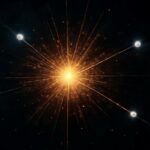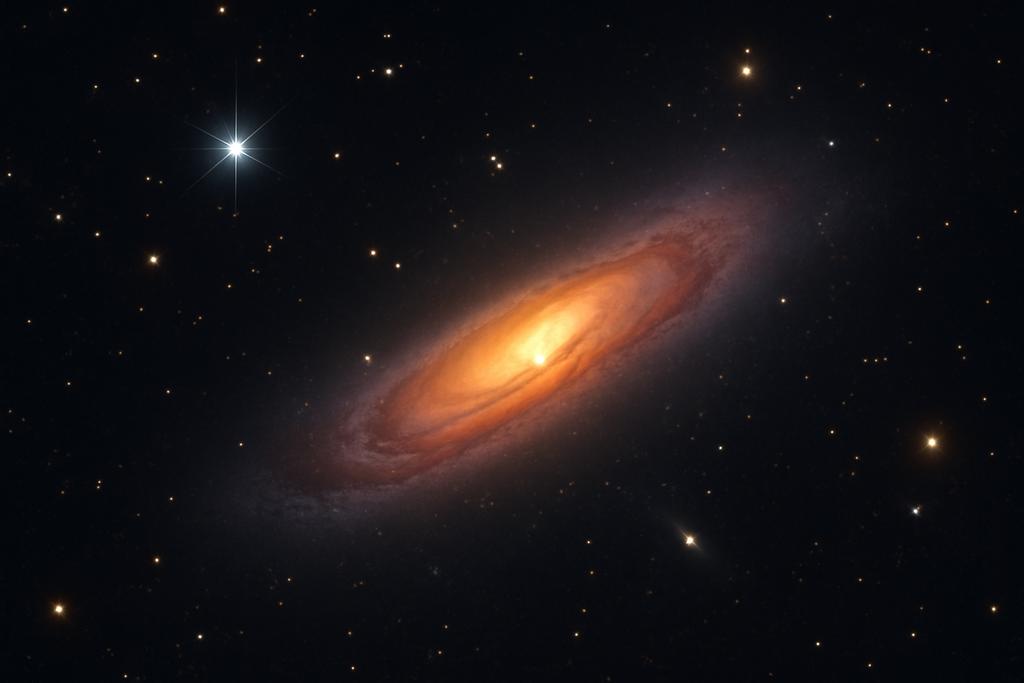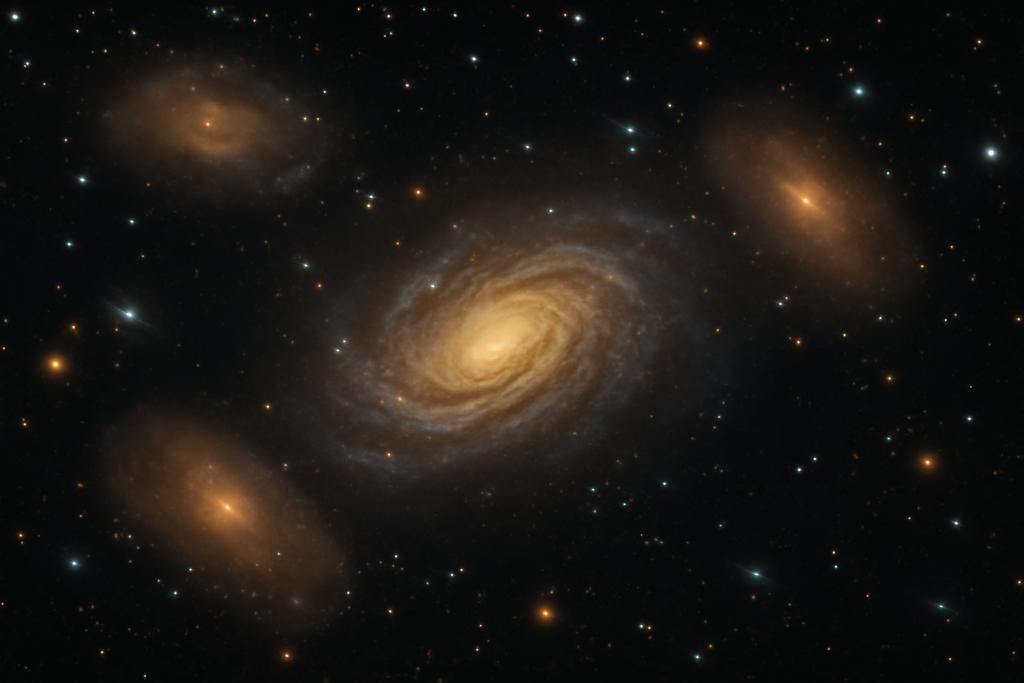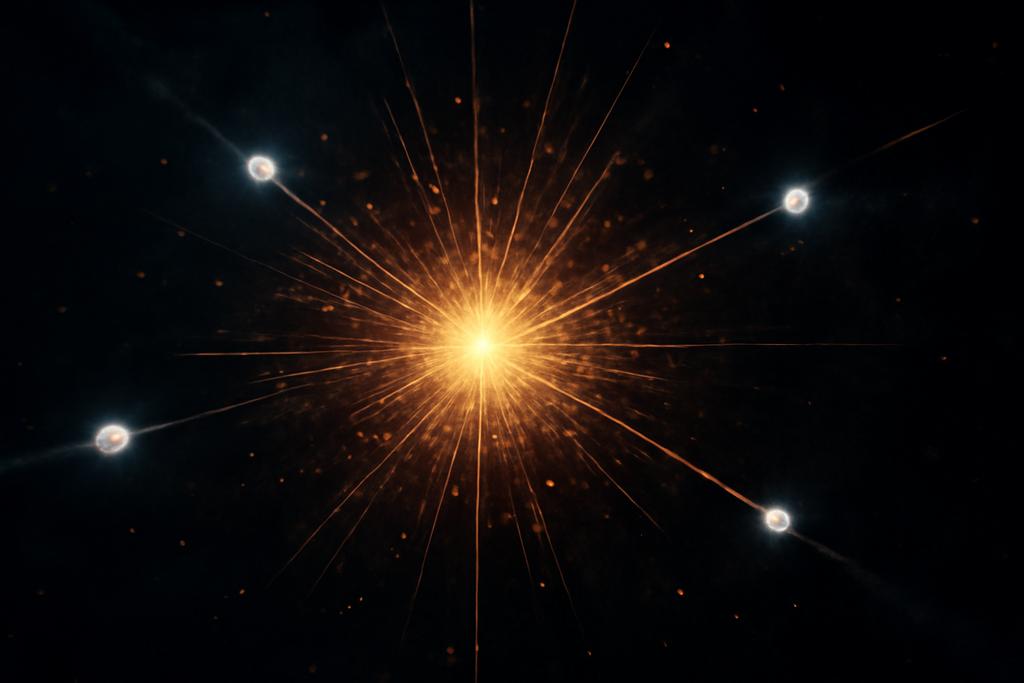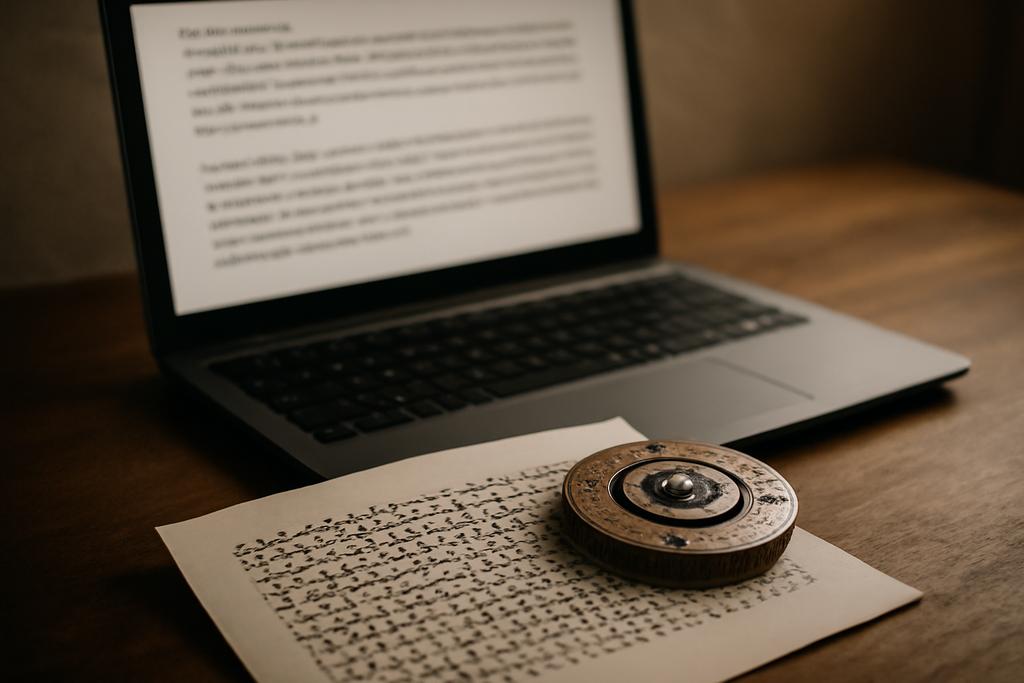The universe hums with gravity, but some notes are whisper-soft. Gravitational redshift—the tiny change in light’s frequency caused by a galaxy’s position in a gravitational potential—offers a direct probe of how time and space bend under gravity’s spell. It’s a signal that sits at the edge of detectability, two orders of magnitude weaker than the familiar Doppler shifts that color redshift surveys. Yet as new galaxy catalogs multiply, the possibility of hearing that whisper grows louder. The study we’re looking at asks: can we model every subtle asymmetry in how galaxies cluster, so we can pull gravitational redshift cleanly out of the orchestra of effects shaping what we observe?
Researchers at the University of Geneva—led by Lawrence Dam and Camille Bonvin—have produced a nonlinear, full-sky model that does exactly that. Their work advances the theory of redshift-space distortions by weaving gravitational redshift, wide-angle geometry, lightcone effects, and other kinematic contributions into one compact, nonperturbative formula. It’s the kind of advance that feels technical and abstract until you see what it unlocks: a clearer map from the observed tapestry of galaxies to the underlying gravity that shapes it. And it isn’t just math. This model helps explain a curious feature seen in simulations—a turnover in the dipole moment of the cross-correlation between galaxy populations around 20 h−1 Mpc—that linear theory simply can’t account for. By tying that turnover to the pairwise difference in gravitational potential, the authors illuminate a physical lever the cosmos uses to reveal gravity’s fingerprints on large scales.
A complete map of redshift-space asymmetry
To understand what the paper accomplishes, start with the idea of a map from real space to redshift space. In a galaxy survey we don’t measure galaxy positions directly; we infer them from their redshifts. Peculiar motions—galaxies tugged by gravity—shift those redshifts, a phenomenon known as redshift-space distortions (RSD). But gravity does more than move galaxies: the gravitational potential itself strains spacetime and imprints a subtle gravitational redshift on the light we receive. The new work goes further, building a nonlinear model that remains valid on mildly nonlinear scales where the dipole (an odd multipole) in the cross-correlation between two distinct galaxy populations becomes a diagnostic beacon for gravitational redshift.
The heart of the approach is the streaming model, a nonperturbative framework for RSD that the authors extend to include gravitational redshift, wide-angle effects, and lightcone corrections. What makes this powerful is the emphasis on the map from real to redshift space, denoted by δχ, which collects all distortions along the line of sight. The authors show that the full redshift-space density can be written in terms of a probability distribution p(χ|χ′) that tracks how real-space configurations χ′ map to redshift-space configurations χ. In practice, they truncate this distribution to its first two cumulants—the mean displacement m and the covariance C—while preserving the nonlinearity that matters for the dipole. This yields a compact, nonperturbative formula that still respects the geometry of the sky and the fact that observations come from our past lightcone.
Crucially, the model treats two different tracers A and B, because the dipole is an antisymmetric observable: swapping which tracer sits at which point changes the sign of the signal. The authors separate every contribution into symmetric and antisymmetric parts, revealing which terms feed the odd moments that underpin the dipole. On physical grounds, the antisymmetric pieces are the meaningful harbingers of gravitational redshift, but they can be contaminated by kinematic effects. The paper’s formalism keeps track of those contaminants and shows where the gravitational redshift stands out as the primary driver of the dipole on mildly nonlinear scales. This clarity matters because surveys like DESI and Euclid are finally entering the regime where these subtle signals can be teased apart with confidence.
Unpacking the dipole: what drives asymmetry
The dipole is not just a quirky artifact; it is, in essence, gravity’s direct imprint on the galaxy distribution. The authors show that the dipole arises from two families of pairwise quantities that live in the redshift-space description: velocity- and potential-related terms. They separate these into symmetric pieces—those that contribute to even multipoles like the monopole and quadrupole—and antisymmetric pieces that feed the dipole and other odd multipoles. The velocity-related terms bring in the familiar wide-angle redshift-space distortions; the potential terms bring gravitational redshift into the same formal language. The antisymmetry under exchanging tracers A and B is the fingerprint of a genuine gravitational redshift signal, distinct from a purely kinematic effect.
Two pairwise quantities become central. The first is the pairwise velocity difference, ⟪∆u⟫, which captures how the relative motion of a galaxy pair biases their observed separation along the line of sight. The second is the pairwise potential difference, ⟪∆ψ⟫, which tracks how the local gravitational environment biases the light’s redshift when it travels from each galaxy to us. On linear scales these tend to cancel in certain combinations, but nonlinearities breathe life into the antisymmetric part of the signal. The authors’ halo-model treatment shows that the one-halo contribution to ⟪∆ψ⟫—the gravitational potential depth sampled at the site of each halo—dominates the nonlinear dipole across many scales. In other words, the deepest wells where galaxies reside leave a disproportionately large gravitational redshift imprint on the light reaching us.
The analysis reveals a striking feature: the turnover of the dipole around s ≈ 20 h−1 Mpc. Linear theory would predict a steadily fading signal with scale, but the simulations show a dipole that rises and then crosses zero. The authors connect this turnover to a subtle shift term they call the shift, an advection-like effect: as pairs of galaxies are transported along the line of sight by the combined action of their velocities and gravitational potentials, the dipole’s sign and amplitude shift in a scale-dependent way. The turnover is not a fluke; it is the nonlinear gravitational redshift signaling that gravity’s imprint is becoming the dominant effect in that regime. Their perturbative expansion makes the mechanism tangible: the derivative structure of the dipole with respect to the real-space separation carries the telltale signature of a nonlinear, gravity-driven transport of pairs along our line of sight.
From simulations to survey skies
Validation matters, and the team tests their full-sky model against a powerful numerical laboratory: the RayGalGroup simulation suite, which charts dark-matter haloes in a lightcone with ray-traced relativistic effects. They construct two tracer populations with distinct halo masses and measure the dipole in their cross-correlation. The comparison is nuanced: linear theory does not capture the turnover; the full nonlinear streaming model does much better, reproducing the zero-crossing near 20 h−1 Mpc and aligning with the amplitude and shape seen in simulations within the statistical uncertainties of the mock data.
The RayGalGroup work is more than a single check. It provides a concrete testbed for the theory’s ingredients, including the crucial nonlinear one-point function ⟨ψ(0)δA(0)⟩ that seeds the ⟪∆ψ⟫1h term. The authors show that this one-point function is highly sensitive to small-scale physics inside haloes. They compute it with a halo-model approach, incorporating halo profiles and masses, and find that it can shift the turnover point by a substantial fraction if misestimated. In short, the nonlinear gravitational redshift signal lives in the halo-dominated, small-scale environment, and getting that environment right is essential to reading gravity’s fingerprint accurately in data.
The study also probes the roles of lightcone and lookback-time effects, which arise because we observe galaxies along our past lightcone rather than on a single cosmic time slice. These are subtle (on the order of H/k corrections) but not negligible. The authors quantify their impact on the dipole and find they slightly dampen the amplitude, but they are not the culprit behind the turnover. That turnover is a genuine nonlinear gravitational signal, not an artifact of observational geometry. This distinction matters for future surveys chasing a clean gravitational redshift detection amid a forest of other distortions.
Why this matters: gravity, cosmology, and the future of large-scale structure
Gravitational redshift is a direct probe of the time-time component of the metric perturbation—the part of gravity that is deeply tied to how clocks run in gravitational wells. In linear theory, lensing and redshift distortions conspire to smear this signal away, but the mildly nonlinear regime is where gravity’s clock-ticking shows itself most clearly. The model in this paper paves a path to extract that signal robustly from real data, enabling several exciting possibilities.
First, measuring gravitational redshift in the large-scale structure offers a complementary test of gravity and the equivalence principle on cosmological scales. It probes the same fundamental idea as relativistic tests in clusters, but now across hundreds of millions of galaxies instead of a few dozens in a cluster. This broadens the experimental playground where modified gravity theories or exotic dark sector physics might leave subtle footprints. Second, the approach provides a framework to isolate the gravitational redshift from the noise of kinematic and observational effects. If upcoming surveys like DESI’s Bright Galaxy Sample or Euclid can measure the dipole with sufficient precision, we’ll have a new, independent gravity check in the same vein as weak lensing and redshift-space distortions—but with a different sensitivity to gravitational potentials than either probe alone.
Equally important is the methodological shift: the authors show that redshift-space distortions, gravitational redshift, wide-angle effects, and lightcone corrections can be folded into a single, physically interpretable, nonperturbative expression. That matters because survey teams need models that are both accurate and tractable enough to fit to data without exploding in nuisance parameters. By tying the key nonlinear dipole to a small set of pairwise quantities—most notably the pairwise potential difference ⟪∆ψ⟫—the paper points toward a more transparent, physically rooted way to interpret observations. In effect, the cosmos is not just a blurry map of galaxies; it is a dynamic system where pairwise environments and their gravitational depths quietly steer how we see the sky. Reading that signal cleanly could tighten constraints on gravity’s behavior, the growth of structure, and the nature of dark matter and dark energy.
Institution and authors: The research is conducted by a team at the University of Geneva (Department of Theoretical Physics), led by Lawrence Dam and Camille Bonvin. The paper situates the results within a broader effort to harness nonlinear redshift-space distortions to test gravity with next-generation surveys.
What to watch for next: The path to real data will involve extending the model to galaxies (not just haloes), integrating magnification and evolution biases, and refining the nonlinear one-point function ⟨ψδ⟩ in the halo context. The authors outline a clear program: push perturbation theory beyond linear order with tools like convolution Lagrangian perturbation theory, incorporate halo occupation statistics to place galaxies inside haloes, and eventually test the full nonlinear dipole with DESI, Euclid, and similar surveys. If successful, gravitational redshift could join the pantheon of observables (galaxy clustering, weak lensing, peculiar velocities) that together test gravity in the cosmos with unprecedented depth and nuance.
Bottom line: This work does more than sharpen a theoretical model; it reframes how we extract gravity’s subtle signatures from the grand cosmological map. By showing how the dipole’s turnover arises from a nonlinear, environment-sensitive gravitational redshift—and by validating the model against simulations—the authors give the community a robust tool for a cleaner, more compelling test of gravity on the largest scales we can observe.


